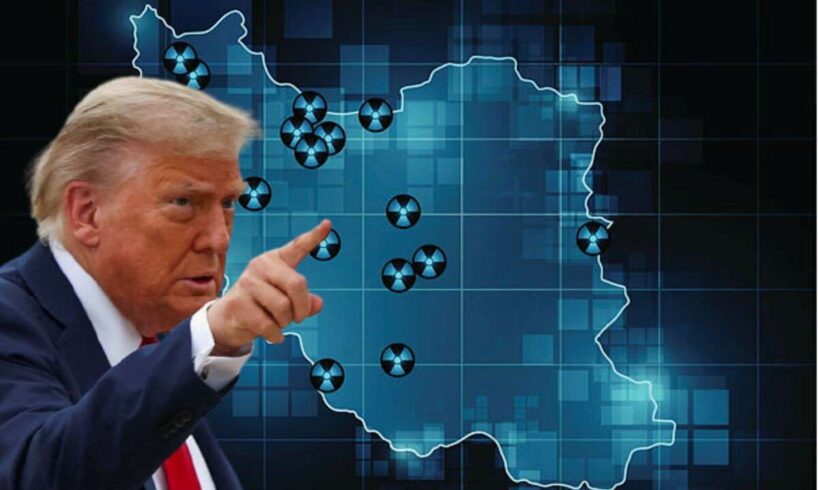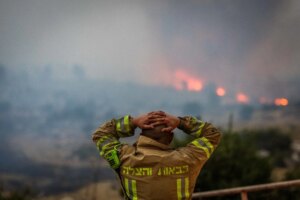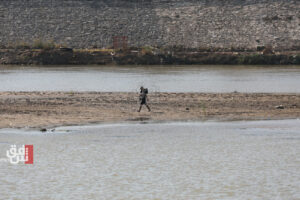
A fresh US intelligence evaluation has determined that American airstrikes on Iranian nuclear facilities achieved only partial success, with one of three targeted enrichment sites suffering complete destruction while the remaining two facilities sustained damage that may permit nuclear enrichment activities to resume within several months, according to five current and former US officials familiar with the assessment who spoke to NBC News.
The evaluation, which forms part of the Trump administration’s continuing efforts to assess Iran’s nuclear program status following the facility strikes, was presented to certain US legislators, Defense Department personnel and allied nations in recent days, four of those sources confirmed to NBC News.
NBC News has also discovered that US Central Command had formulated a far more extensive plan to attack Iran that would have involved targeting three additional locations in an operation spanning several weeks rather than a single evening, according to one current US official and two former US officials.
President Donald Trump received briefings on that comprehensive plan, but it was ultimately rejected because it conflicted with his foreign policy instincts to withdraw the United States from international conflicts rather than deepen involvement, along with the potential for significant casualties on both sides, one current official and one former official explained to NBC News.
The impact of the strike by US forces on Fordo on June 22, 2025 (AP)
“We were willing to go all the way in our options, but the president did not want to,” one source with knowledge of the plan stated.
In remarks delivered in the hours following the strikes, Trump characterized the attacks he authorized as “a spectacular military success” and declared, “Iran’s key enrichment facilities have been completely and totally obliterated.”
The actual situation as determined through intelligence gathering appears more complex. Should the preliminary findings regarding the damage inflicted on Iran’s nuclear program prove accurate as additional intelligence emerges, the United States might find itself returning to conflict in the region.
Discussions have taken place within both American and Israeli governments regarding whether additional strikes on the two less-damaged facilities might be required if Iran fails to agree soon to restart negotiations with the Trump administration on a nuclear agreement or if signs emerge that Iran is attempting to rebuild at those locations, one current official and one former official told NBC News. Iran has consistently maintained its nuclear program serves purely peaceful, civilian purposes.
The recent assessment represents a current snapshot of the damage US strikes caused amid an intelligence-collection process that administration officials have indicated will continue for months. Evaluations of Iran’s nuclear program following the US strikes are anticipated to evolve over time, and according to two current officials, as the process advances, the findings suggest greater damage than previous assessments indicated. That assessment remains the current understanding of the strikes’ impact, officials confirmed to NBC News.
“As the President has said and experts have verified, Operation Midnight Hammer totally obliterated Iran’s nuclear capabilities,” White House spokeswoman Anna Kelly told NBC News in a statement. “America and the world are safer, thanks to his decisive action.”
In his own statement, chief Pentagon spokesman Sean Parnell declared to NBC News: “The credibility of the Fake News Media is similar to that of the current state of the Iranian nuclear facilities: destroyed, in the dirt, and will take years to recover. President Trump was clear and the American people understand: Iran’s nuclear facilities in Fordow, Isfahan, and Natanz were completely and totally obliterated. There is no doubt about that.”
He added, “Operation Midnight Hammer was a significant blow to Iran’s nuclear capabilities thanks to the decisive action of President Trump and the bravery of every man and woman in uniform who supported this mission.”
Destruction and deterrence
The US strikes targeted three enrichment facilities in Iran: Fordo, Natanz and Isfahan. US officials believe the assault on Fordo, which has long been considered a critical element of Iran’s nuclear ambitions, succeeded in setting back Iranian enrichment capabilities at that location by as much as two years, according to two current officials who spoke to NBC News.
Netanyahu gifting President Donald Trump a mezuzah in the shape of a B-2, which was used by the US to bomb Fordo, on July 7, 2025 (GPO
Much of the administration’s public communications about the strikes has concentrated on Fordo. In a Pentagon briefing conducted in response to reporting on an initial Defense Intelligence Agency assessment that concluded Iran’s nuclear program had been delayed by only three to six months, Defense Secretary Pete Hegseth and Gen. Dan Caine, the chairman of the Joint Chiefs of Staff, spoke extensively about the Fordo strike but not the attacks at Natanz and Isfahan.
US officials knew prior to the airstrikes that Iran possessed structures and enriched uranium at Natanz and Isfahan that were likely beyond the reach of even America’s 30,000-pound (13,600-kilogram) GBU-57 “bunker buster” bombs, three sources told NBC News. Those bombs, which had never been deployed in combat before the strikes, were designed specifically with the deeply buried facilities carved into mountain sides at Fordo in mind.
As early as 2023, however, indications emerged that Iran was constructing tunnels at Natanz that extended below where the GBU-57 could penetrate. Deep underground tunnels also exist at Isfahan. The United States struck surface targets at Isfahan with Tomahawk missiles and did not deploy GBU-57s there, but utilized them at Natanz.
White House officials directed NBC News to a closed-door briefing conducted in late June by CIA Director John Ratcliffe, who informed lawmakers that Iran’s nuclear program was “severely damaged” and that several key nuclear facilities were “completely destroyed,” according to an administration official’s description of the briefing provided to NBC News. Ratcliffe stated the only metal conversion facility at Natanz, required for nuclear enrichment, was destroyed to the point that it would take “years to rebuild,” according to a White House official authorized to describe portions of the classified briefing.
Ratcliffe also indicated that the intelligence community believes the strikes buried the vast majority of enriched uranium at Isfahan and Fordo and that therefore it would be extremely difficult for the Iranians to extract it to resume enrichment, according to the official who spoke to NBC News. The United States has not observed indications that Iran is attempting to excavate the facilities, two officials confirmed.
As NBC News has reported, the Israeli government believes at least some of Iran’s highly enriched uranium remains intact but buried beneath the Isfahan facility, according to a senior Israeli government official who briefed reporters in Washington last week. The official stated, however, that Israel considers the material effectively unreachable, because it is monitoring and will conduct new strikes if it believes Iran is attempting to dig up the uranium. The official also indicated Israel believes Iran’s nuclear program has been set back by up to two years.
Similarly, even if the targeted Iranian nuclear sites were not completely destroyed, US officials and Republican supporters of the operation consider it successful because it has altered the strategic equation for Iran. From their perspective, the regime in Tehran now faces a credible threat of additional airstrikes if Israel and the United States believe it is attempting to revive clandestine nuclear work.
Asked late last month whether he would consider bombing Iran again if intelligence reports concluded Iran can enrich uranium at a level that concerns him, Trump responded: “Sure. Without question. Absolutely.”
Iran’s air defenses have been largely eliminated, making it virtually impossible for Iran to defend against further strikes on facilities in the future, the White House official stated to NBC News.
“It was made clear that Iran no longer has any more [air defenses], so the idea that they can easily rebuild anything is ludicrous,” the White House official said.
The ‘all-in’ plan
Beginning during the Biden administration, as early as last fall and continuing into this spring, Army Gen. Erik Kurilla, the head of US Central Command, had developed a plan to go “all-in” on striking Iran, according to a current US official and two former officials who spoke to NBC News. That option was designed to “truly decimate” Iran’s nuclear capabilities, in the words of one former official.
Iranian flags fly as fire and smoke at Sharan Oil depot rise, following Israeli strikes on Iran, in Tehran, Iran, June 15, 2025 (Majid Asgaripour/WANA/Reuters)
Under the plan, the United States would have struck six sites. The reasoning was that the six sites would need to be hit repeatedly to inflict the kind of damage necessary to completely end the program, people familiar with the thinking told NBC News. The plan would also have involved targeting more of Iran’s air defense and ballistic missile capabilities, and planners projected it could result in a high number of Iranian casualties. US officials expected that if that were to occur, Iran would target American positions, for example in Iraq and Syria, a person familiar with the plan explained to NBC News.
“It would be a protracted air campaign,” the person said.
Some Trump administration officials believed a deeper offensive option against Iran was a viable policy, two former officials told NBC News.
Trump was briefed on the so-called all-in plan, but it was ultimately rejected because it would have required a sustained period of conflict.
The history
During his first term, in 2018, Trump withdrew the United States from a 2015 nuclear agreement between Iran and world powers that was negotiated during the Obama administration. The agreement, known as the Joint Comprehensive Plan of Action, imposed strict limitations on Iran’s nuclear program in exchange for an easing of economic sanctions.
Rescue personnel work at an impact site following missile attack from Iran on Israel, in centra Israel, June 14, 2025 (Reuters / Ronen Zvulun)
Under the deal, Iran was a year away from obtaining enough fissile material for a nuclear bomb. After Trump withdrew from the accord and reimposed sanctions, Iran violated restrictions on its uranium enrichment. Before the June airstrikes, the regime had enough fissile material for about nine to 10 bombs, according to US officials and United Nations inspectors who spoke to NBC News.
Trump has since sought a new agreement with Iran that would prevent it from developing nuclear weapons. Indirect talks between US and Iranian officials failed to secure a deal before Israel launched airstrikes on Iran’s nuclear facilities.





